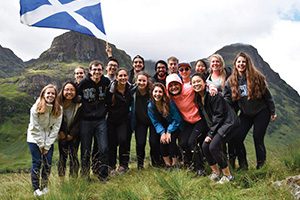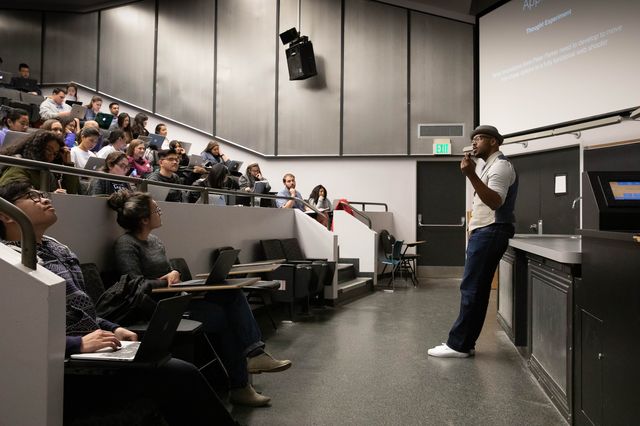L.A. could better target homeless prevention services with predictive analytics

Photo credit: California Policy Lab
Each year, 2 million single adults receive housing, health, and emergency services from Los Angeles County. About 2% of them — around 76,000 people — will become homeless. Predictive modeling could help address the homelessness crisis in Los Angeles County, according to a report by researchers from the California Policy Lab at UCLA, and the Poverty Lab at the University of Chicago Harris School of Public Policy.
Using data from seven Los Angeles County agencies about services they provided to county residents between 2012 and 2016 — the residents’ names and personally identifiable information were omitted and each person was assigned an ID number for the study — researchers developed a model to predict which 3,000 residents were most likely to become homeless in 2017.
The researchers then checked the accuracy of their predictions against county records, and found that 46% of the people predicted by the model to be at risk for first-time homelessness or a repeat spell of homelessness did in fact become homeless at some point during 2017.
“Bringing together data from multiple county agencies gave us a more nuanced understanding about what’s happening to people right before they slip into homeless and how services can be better targeted to prevent that from happening,” said Till von Wachter, a UCLA economics professor and co-author of the report. Von Wachter is also faculty director at the California Policy Lab.
The California Policy Lab pairs UCLA and other UC researchers with policymakers to solve urgent social problems, including homelessness, poverty, crime and education inequality.
The research informed an action plan that was developed by the county-led Mainstream Systems Homelessness Prevention Workgroup. That plan, which was submitted to the Los Angeles County Board of Supervisors on Dec. 16, recommends that the county use predictive models to intervene with adults who are identified as having a high risk for homelessness before they reach a crisis.
It also suggests that the county launch a multidisciplinary homelessness prevention unit that includes representatives of the county’s departments of mental health, health services and social services, and the sheriff and probation offices. The unit would accept referrals from the risks lists generated by the predictive models, identify which programs or services would be most helpful for each individual, and then reach out to people to connect them to those services.
The plan is expected to receive $3 million in funding during 2020 from Measure H, a sales tax approved by Los Angeles County voters in 2017 to help address the homeless crisis, in addition to drawing some existing resources from Los Angeles County departments.
“Last year, despite providing housing to tens of thousands of people, we saw more and more individuals and families becoming homeless,” said Phil Ansell, the director of the Los Angeles County Homeless Initiative. “The county is focused on using strategic approaches to preventing homelessness, and these groundbreaking models will make it possible to reach those who need us the most before they reach the crisis point and fall into homelessness.”
The models allowed researches to identify warning signs that could help local governments intervene early, especially for residents living in deep poverty, said Harold Pollack, the Helen Ross Professor at the University of Chicago School of Social Service Administration and a co-author of the study. The research that led to the new recommendations was begun at Chicago.
“The models suggest that sharp spikes in service use, increasingly frequent service use and the receipt of multiple services from a single agency are all warning signs that someone is at high risk for homelessness,” Pollack said. “We’re now diving deeper into the models with our Los Angeles County partners to learn more and to see how these results can help focus public health and social services to this vulnerable population.”
Janey Rountree, executive director of the California Policy Lab at UCLA, said using the predictive models could go a long way toward making sure homeless prevention services reach the right people at the right time.
“Predictive modeling can help ensure that happens, before they’re in a full-blown crisis,” she said. “We look forward to seeing its impact in connecting people to the help they need.”
The study also found:
- Effectively serving the 1% of county clients who have the greatest risk for a new homeless spell would prevent nearly 6,900 homeless spells in one year.
- County residents who have the highest risk for homelessness are interacting with multiple agencies.
- Falling into homelessness happens very quickly, typically within six months of a precipitating event, meaning that Los Angeles County and service providers must react quickly.
The research was provided at no cost to the county. Financial support was provided by Arnold Ventures and the Max Factor Family Foundation.
This article originally appeared in the UCLA Newsroom.





















